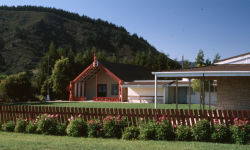[{"id":5322,"order":0,"imagePath":"https://admin.ezystream.com/static/images/article/ca442f6e-73bb-4019-a148-a89ac28ecc64.png","type":"image","content":"https://admin.ezystream.com/static/images/article/ca442f6e-73bb-4019-a148-a89ac28ecc64.png"},{"id":5323,"order":1,"contentText":"Assisted dying became legally available on 7 November 2021. Our lecturer in Pastoral Care and Counselling, Dr Phil Halstead, begins this series of articles to resource and support our churches at this time.
Other articles in The End of Life Choice Act series:
- Faithful Christianity by Jonathan Robinson
- Being a carer by Donna Denmead
- The practicalities by Rebekah Kilpatrick
My heart sunk as I read Mike Crudgeu2019s email in which he invited me to write a brief pastoral piece on the End of Life Choice Act 2019 that came into effect on November 7, 2021.1 I thought, u201cThis is a controversial topic that I know little about. I could get into all kinds of hot water here.u201d u201cThere are so many others who are better equipped than me to pen such an offering.u201d u201cHow can I politely wriggle out of this conundrum?u201d And then, I struck gold: I wrote back to Mike and said, u201cIu2019d like to be able to help, but there could be a problem: Iu2019ve never encountered this situation in my pastoral ministry.u201d I saw this as my get-out-of-jail-for-free-card. However, perhaps foolishly, I added, u201cI could, however, provide an outline of a pastoral process I would follow if I were to encounter an end-of-life scenario and were given time to think about it. Thus, rather than attempting to offer answers to the questions that arise, I could illustrate a method that anyone can work through to come up with their own responses.u201d Mike responded by saying he liked my idea and pointed out that since itu2019s a brand-new Act very few pastoral workers would approach this topic from a vantage point of experience. Touchu00e9.
So, how might I or any pastoral caregiver respond if two adult siblings were to make an appointment to talk through their terminally ill 89-year-old motheru2019s request for an assisted death? And what would I do if a 60-year-old man told me that after many years of fighting a losing battle with a chronic illness his life was no longer bearable and he wanted out?
I imagine after catching my breath, saying u201cIu2019m so sorry that youu2019re in this very difficult situation,u201d and quietly crying out to God for help and wisdom, Iu2019d go to my default position: Iu2019d listen to these peopleu2019s full stories. Rachel Remen says, u201cI suspect that the most basic and powerful way to connect to another person is to listen. Just listen. Perhaps the most important thing we can ever give each other is our attention. And especially if itu2019s given from the heart.u201d2 To listen is to care. We canu2019t always cure, but we can always care. No one expects us to have all the answers, but we can sit with the hurting and appease their loneliness a tad.
Somewhere in this process, Iu2019d invite those directly involved with the end-of-life scenarios to work through Emmanuel Larteyu2019s five-phase pastoral cycle with me.3 There are many advantages of persons working collectively and thinking theologically, biblically, pastorally, and prayerfully about real issues.
Assuming people agree to explore the topic, weu2019d first need to try to park our preconceived ideas regarding assisted dying on a metaphorical bookshelf. For me this includes the question, u201cWhat would happen over time to the psychological health of the physicians who oversee or administer the final dose?u201d Iu2019d also need to strive to ensure that my struggles with Parkinsonu2019s donu2019t blur the lenses Iu2019d be looking through on this journey. I wonder what you ought to park.
Larteyu2019s model begins with concrete experience. Optimally, weu2019d hear from those directly involved with the triggering situation, as well as from folks with first-hand experiences beyond the immediate circle. This wider group might include persons who have assisted someone to die, or individuals who have changed their minds about ending their lives, for example. The primary goal here is to listen to and live with peopleu2019s stories, so that our study is grounded in lived experience. The goal is not to advise, disagree, or convert. Iu2019m guessing this exercise would begin to show us that there are many different facets to peopleu2019s end-of-life situations. Weu2019d also be reminded that an experiential view of assisted dying is different from a conceptual view. Both perspectives are important, but they are not the same.
The second phase of Larteyu2019s model is a situational analysis. Here, weu2019d listen to the voices of others to gain a clearer understanding of peopleu2019s experiences with end-of-life questions. This u201csocial perspective takingu201d4 might entail viewing movies like Million Dollar Baby5 and The Sea Inside.6 It would involve reading the End-of-Life Choice Act, and the Ministry of Healthu2019s Assisted Dying Service.7 We might also read books like Jesse Beringu2019s A Very Human Ending8 and seek the counsel of lawyers and palliative care authorities. Ideally, weu2019d also survey the social, political, psychological, and economic factors that affect end-of-life decisions. Clearly this kind of u201ccollective seeingu201d canu2019t happen overnight.9 If youu2019re time-poor, you may have to be very selective with who and what you listen to. If youu2019re time-rich, you can do much of this work before you encounter people grappling with end-of-life issues.
Undertaking a theological analysis comprises the third component of Larteyu2019s model. This is where faith perspectives respectfully engage with, and question, peopleu2019s experiences and the insights identified via the situational analysis. You may choose to divvy up amongst yourselves who will research what here, for plainly the pool of potential material to explore is endless. Examples include ethical issues such as the dignity of the individual, human freedom, and the sanctity of life,10 as well as theological and biblical takes on topics like compassion, the purpose of suffering, and life after death.
You might also wish to engage with some classic pastoral care definitions. Liston Mills contends that every genuine definition of pastoral care has at its core u201ca way of understanding our relatedness to God and the ingredients or acts which may serve to enhance or detract from that relatedness.u201d11 Consequently, you might ponder how you could help your care-seekers to connect with Jesus. Howard Clinebell defines pastoral care as u201cthe broad, inclusive ministry of healing and growth within a congregation and its community, through the life cycle.u201d12 One of many questions that emerges here is whether the age of the individuals investigating assisted dying with you change anything? And William Clebsch and Charles Jaekle reason that u201cpastoral care consists of helping acts done by representative Christian persons, directed toward the healing, sustaining, guiding, and reconciling of troubled persons u2026u201d13 How might you connect these principles to the cluster of care-seekers youu2019re journeying with? Clearly, when you chat about your discoveries you could be in for a long night. I suggest you organise some strong coffee to be on hand.
In Larteyu2019s fourth stage, which he has entitled situational analysis of theology, oneu2019s theology is subjected to the critique of all kinds of questions including those from the people and resources weu2019ve consulted in our research. Where possible, it would also be beneficial to open this part of the study up to a wider audience, so that their questions and perspectives could further refine our thinking. Who knows where this could lead?
Larteyu2019s fifth stage is the response phase. Here, u201cthe group explores the response options that are available to [people] in the light of all the stages that have gone before.u201d14 I realise that the gravity of our context hits here. Where Larteyu2019s model at this juncture enables provisional decisions to be made, trialled, assessed, and revised, people in our context usually donu2019t have such space. Nonetheless, I trust that this offering motivates you to carve out some time to research thoroughly end-of-life (and other) matters of import. Of the multiple benefits that may stem from this kind of labour, one may well be to mitigate your fear of receiving indiscriminate e-mails from Mike.
Contributor: Dr Phil Halstead, Lecturer in Pastoral Care and Counselling, Carey Baptist College.
References:
- Ministry of Health, u201cThe End of Life Choice Act 2019,u201d Ministry of Health, www.health.govt.nz/our-work/life-stages/assisted-dying-service/end-life-choice-act-2019
- Rachel Naomi Remen, Kitchen Table Wisdom: Stories that Heal (Sydney: Pan Macmillian, 1996), 143.
- Emmanuel Y. Lartey, In Living Color: An Intercultural Approach to Pastoral Care and Counseling. 2nd ed. (London: Jessica Kingsley, 2003), 132.
- Lartey, In Living Color, 132.
- Clint Eastwood, Million Dollar Baby. DVD. Burbank, CA: Lakeshore Entertainment Malpaso Productions, 2004.
- Alejandro Amenu00e1bar, The Sea Inside. DVD. Warner Sogefilms (Spain), 2004.
- Ministry of Health, u201cAssisted dying Service,u201d Ministry of Health, www.health.govt.nz/our-work/life-stages/assisted-dying-service
- Jesse Bering, A Very Human Ending: How Suicide Haunts our Species (London: Doubleday, 2018).
- Lartey, In Living Color, 133.
- Jonathan Sachs identifies seven features of Jewish ethics. These are the first three. The remaining four are Guilt, not shame; loyalty and love; the ethics of covenant; and the dual covenant. Jonathan Sachs, Essays on Ethics: A Weekly Reading of the Jewish Bible (New Milford, CT: Maggid Books, 2016), xx-xxxi.
- Liston O. Mills, u201cPastoral Care: History, Traditions, and Definitionsu201d, in Dictionary of Pastoral Care and Counseling (ed. Rodney J. Hunter et al; Nashville: Abingdon Press, 2005), 837.
- Howard Clinebell, Basic Types of Pastoral Care and Counseling: Resources for the Ministry of Healing and Growth. Rev. and enl. ed. (Nashville: Abingdon Press, 1984), 26.
- William Clebsch, and Charles Jaekle, Pastoral Care in Historical Perspective (New York: Prentice Hall, 1964), 4.
- Lartey, In Living Color, 133.
Other articles in The End of Life Choice Act series:
- Faithful Christianity by Jonathan Robinson
- Being a carer by Donna Denmead
- The practicalities by Rebekah Kilpatrick


